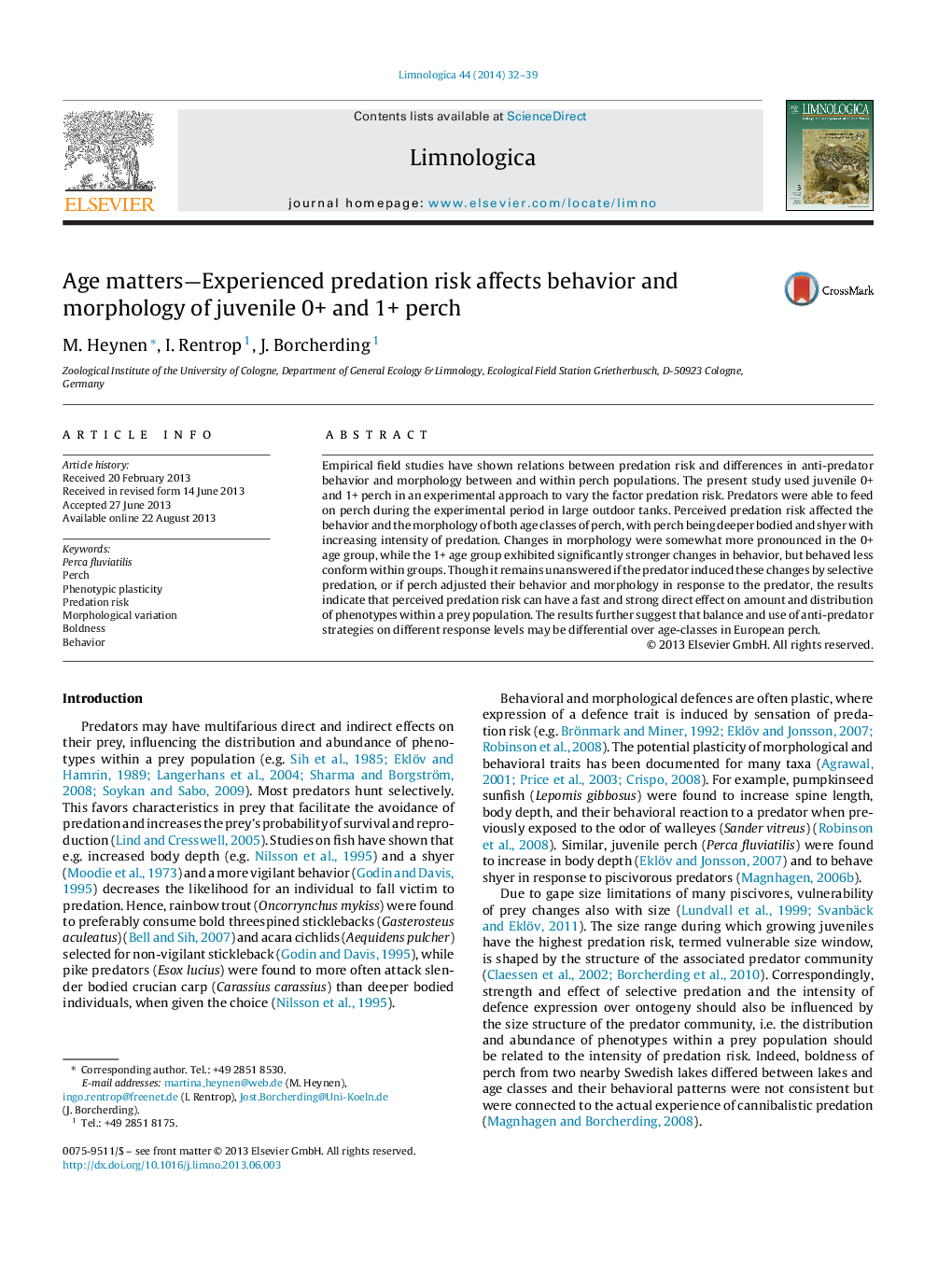| Article ID | Journal | Published Year | Pages | File Type |
|---|---|---|---|---|
| 4400429 | Limnologica - Ecology and Management of Inland Waters | 2014 | 8 Pages |
Empirical field studies have shown relations between predation risk and differences in anti-predator behavior and morphology between and within perch populations. The present study used juvenile 0+ and 1+ perch in an experimental approach to vary the factor predation risk. Predators were able to feed on perch during the experimental period in large outdoor tanks. Perceived predation risk affected the behavior and the morphology of both age classes of perch, with perch being deeper bodied and shyer with increasing intensity of predation. Changes in morphology were somewhat more pronounced in the 0+ age group, while the 1+ age group exhibited significantly stronger changes in behavior, but behaved less conform within groups. Though it remains unanswered if the predator induced these changes by selective predation, or if perch adjusted their behavior and morphology in response to the predator, the results indicate that perceived predation risk can have a fast and strong direct effect on amount and distribution of phenotypes within a prey population. The results further suggest that balance and use of anti-predator strategies on different response levels may be differential over age-classes in European perch.
